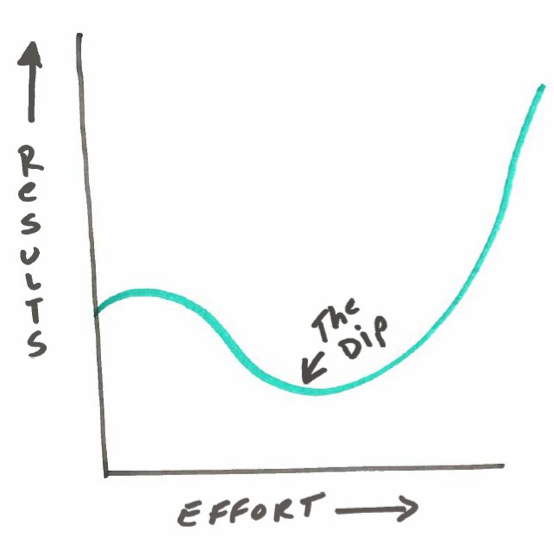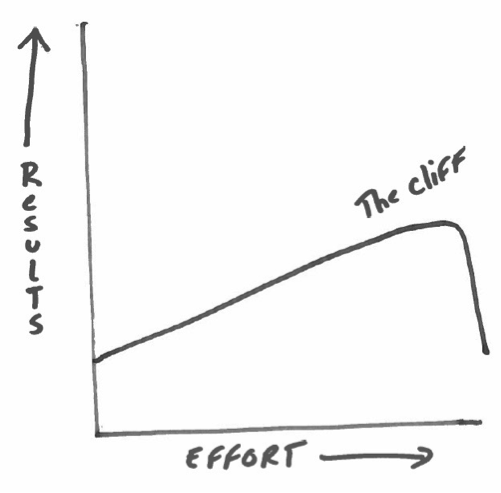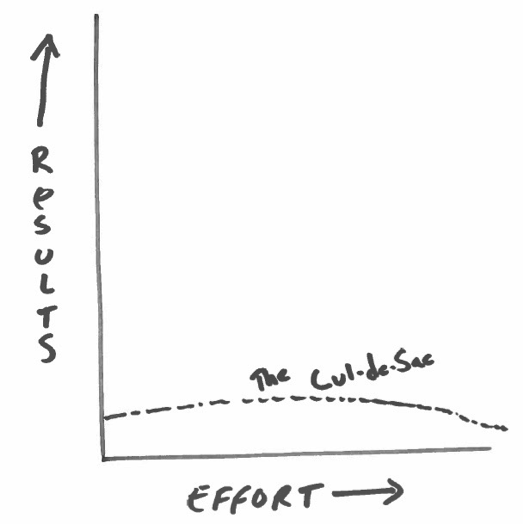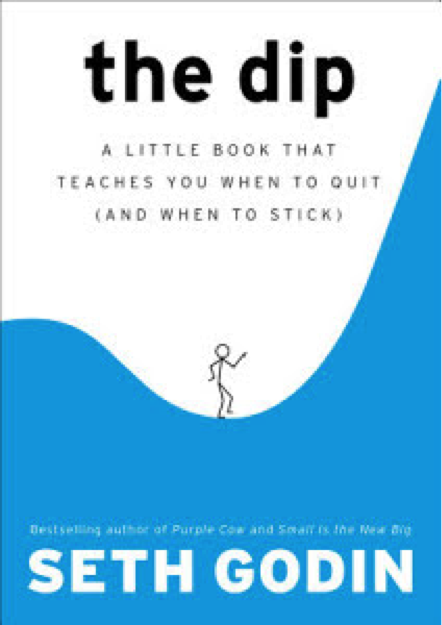This is part two of our lesson on The Dip. In the last lesson, I made the case for perseverance. In this lesson, I will make the case for quitting—Godin’s case for Strategic quitting.[i]
Should You Quit?
Godin begins by asking his readers to consider the following question: Can you be the best at what you do?
If you can, don’t quit.
If you are a salesman, you don’t have to be the best salesman in the whole world, but you do have to seek to be the best salesman in your chosen market.[ii] Why? Godin explained, “The rewards are heavily skewed, so much so that its typical for the #1 to get ten times the benefit of #10, and a hundred times the benefit of #100.”[iii] So, if you are only capable of being the 78th best salesman selling your product in your region, perhaps you should consider finding another product or another line of work.
If you can’t be truly excellent at what you do, maybe you should quit. Stop doing that thing and find something where you can be the best.
Now assuming you can be excellent, the next question is whether you are on a path that will get you there.
The Dip, The Cliff, and The Cul-de-Sac
Godin explained that there are three basic paths—the Dip, the Cliff and the Cul-de-sac. Whether you should keep going or quit depends on which path you are on.[iv]
The Dip
The path to greatness always includes a dip. You start off making progress, but over time, you seem to flatten out or even feel like you have regressed over time. This always happens on the path to mastery; it doesn’t matter if we are talking about marketing or martial arts.[v] And the dip can trick us into thinking we are on the wrong path.

The good news about the dip is that over time, you will get better and you will see greater results if you keep pushing.
The Cliff
The cliff is a different story. As you move toward the cliff, you are doing better and better until you hit a steep drop off. It’s all good until it is not. If you were in the real estate market in 2005-2007 you were on a cliff (although you might not have known it until 2008).

Sometimes you cannot see the cliff coming, but if you can see it, get off that path now. Quit.
The Cul-de-Sac
The cul-de-sac is different. In spite of your effort, you never really saw results. In fact, you never will see results. This is the very definition of a dead-end job.

Should I Persevere or Quit?
Godin explains that a major key to success is determining what path you are on. If you find yourself on a cliff or in a cul-de-sac, the best thing you can do is quit. Quit now and get on a path toward doing something great.[vi]
Quitting is hardly what we think about when we are thinking about success. He wrote, “Quitting is difficult. Quitting requires you to acknowledge that you’re never going to be #1 in the world. At least, not at this.”[vii] But, as he explained, “getting off a Cul-de-Sac is not a moral failing. It’s just smart. Seeing a Cliff coming far in advance isn’t a sign of weakness. Instead, it represents real insight and bravery.”[viii]
Quitting is not the same as failing:
Strategic quitting is a conscious decision you make based on the choices that are available to you. If you realize you’re at a dead end compared with what you could be investing in, quitting is not only a reasonable choice, it’s a smart one.
Failing, on the other hand, means that your dream is over. Failing happens when you give up, when there are no other options, or when you quit so often that you’ve used up all your time and resources.[ix]
To Quit or Not to Quit
To recap, if you are not on track to be the leader in your field, quit and find a place where you can achieve more. If you are on the cul-de-sac or the cliff, quit, and find your way to the other path.
When Quitting is a Bad Idea
If you are in a field where you can dominate your niche and you are not on a cul-de-sac or a cliff, then you are facing an experience curve. Sooner or later you will hit the dip. When you do, the very worst thing you can do is quit. It can be discouraging when you know that you were designed to do what you do, but you are struggling in the dip. In the dip, “the decision to quit is often made in the moment. But that’s exactly the wrong time to make such a critical decision.”[x]
The Dip is Your Friend
But if you are on track to being the best in your market and you are experiencing the Dip, persevere. The dip is tough, but it weeds out the competition. “If you want to be a superstar, then you need to find a field with a steep Dip—a barrier between those who try and those who succeed. And you’ve got to get through that dip to the other side.”[xi]
Summary
Quit if you truly cannot be excellent at what you do. Quit if you are in a dead end job and you could do something more with your talents, but if you are on the right path, and you are in the dip, don’t quit. Persevere. Lean into the dip and you will reap the rewards on the other side.
What About You?
Where are you on your journey? Can you see yourself rising to the top of your chosen market or are you on a dead-end path?
References
[i] Godin, S. (2007). The dip: A little book that teaches you when to quit (and when to stick). New York: Portfolio. (p. 63).
[ii] Godin, S. (2007). The dip: A little book that teaches you when to quit (and when to stick). New York: Portfolio. (p. 11).
[iii] Godin, S. (2007). The dip: A little book that teaches you when to quit (and when to stick). New York: Portfolio. (p. 6)
[iv] Godin, S. (2007). The dip: A little book that teaches you when to quit (and when to stick). New York: Portfolio. (pp. 17-20).
[v] Godin, S. (2007). The dip: A little book that teaches you when to quit (and when to stick). New York: Portfolio. (p. 17)
[vi] Godin, S. (2007). The dip: A little book that teaches you when to quit (and when to stick). New York: Portfolio. (p. 22).
[vii] Godin, S. (2007). The dip: A little book that teaches you when to quit (and when to stick). New York: Portfolio. (p. 30).
[viii] Godin, S. (2007). The dip: A little book that teaches you when to quit (and when to stick). New York: Portfolio. (p. 6).
[ix] Godin, S. (2007). The dip: A little book that teaches you when to quit (and when to stick). New York: Portfolio. (p. 63).
[x] Godin, S. (2007). The dip: A little book that teaches you when to quit (and when to stick). New York: Portfolio. (p. 67).
[xi] Godin, S. (2007). The dip: A little book that teaches you when to quit (and when to stick). New York: Portfolio. (p. 32).
______________

Dr. Darin Gerdes is a tenured Professor of Management in the College of Business at Charleston Southern University. All ideas expressed on www.daringerdes.com are his own.
This post was originally created for Great Business Networking (GBN), a networking organization for business professionals where Dr. Gerdes is the Director of Education.
______________

